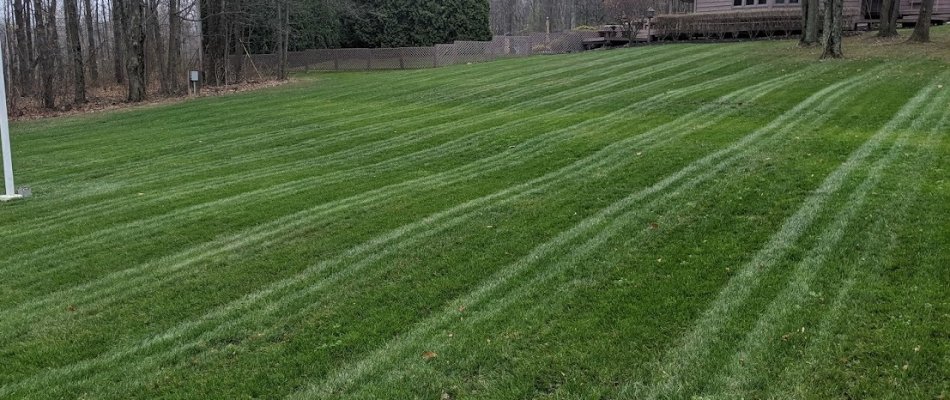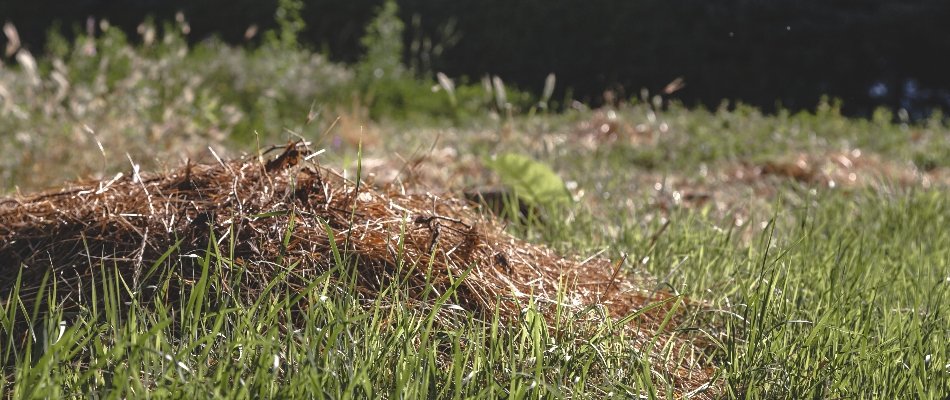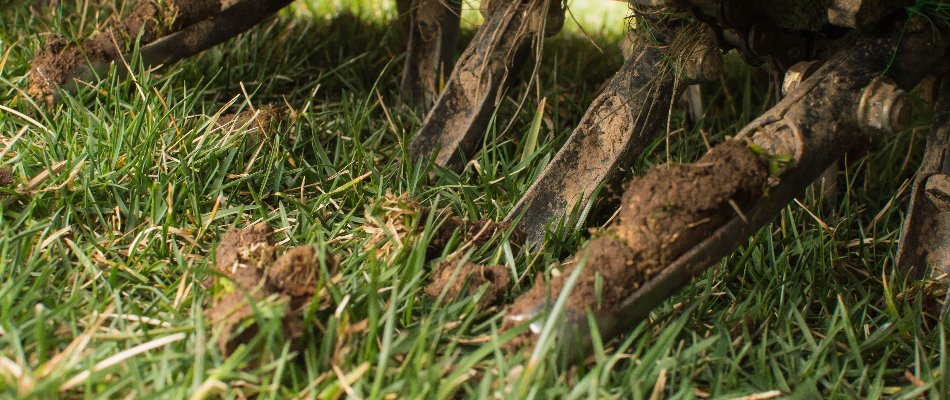Overseeding is a great way to thicken up your lawn in Ohio. When overseeding, there are key steps to follow to prepare your turf for the process. These steps include mowing it shorter than usual to enhance seed-to-soil contact. This practice ensures seeds have access to essential sunlight and nutrients. Clear any debris, such as leaves and thatch, which can block seeds from penetrating the soil. A thorough raking helps expose more soil for efficient seed growth. Aeration is also crucial, as it relieves soil compaction by creating holes for air, water, and nutrients to reach the roots. It will provide ideal pockets for seed settlement, improving germination and overall soil quality.
1. Mow your lawn shorter than usual before overseeding for good seed-to-soil contact.

One of the first steps in preparing your lawn for overseeding is to mow it shorter than you typically would. Cutting the grass to a lower height allows the grass seeds to make better contact with the soil. This closer proximity is essential for seed germination, as it ensures that the seeds have direct access to soil moisture and nutrients.
Mowing lower also reduces the competition your existing grass may pose to the new seeds. When the grass is shorter, sunlight can penetrate more easily to the soil surface, providing the seeds with the light they need to germinate. Be sure to bag the clippings to avoid leaving a layer of cut grass that could hinder seed-to-soil contact. However, take care not to scalp your lawn, which can stress the existing grass and lead to bare patches.
2. Remove Any Debris That Will Block the Grass Seeds

Clearing your lawn of debris is a vital step in the overseeding process. Debris can include leaves, sticks, and any accumulated thatch—a layer of dead grass and roots that can build up over time. This material can create a barrier between grass seeds and the soil, preventing proper germination.
Start by thoroughly raking your lawn to remove all surface debris. A good, deep raking will also help break up thatch, exposing more soil for the seeds to reach. By ensuring the surface is clear, you give the grass seeds the best chance to settle into the soil, take root, and grow efficiently.
3. Aerate Your Lawn Before Overseeding

Aeration is a crucial step in preparing your lawn for overseeding. It involves perforating the soil with an aerator machine to allow air, water, and nutrients to reach the roots of the grass. Aeration alleviates soil compaction, which can inhibit root growth and limit nutrient uptake.
The holes created during aeration offer perfect pockets for grass seeds to settle into, increasing the likelihood of successful germination. This contact ensures the seeds have ample access to the essential elements they need for growth.
Call us today to sign up for our overseeding service!
If you want to rejuvenate your thin and sparse lawn, you've come to the right place. At Free Spray Lawn Care, we offer a professional overseeding service that utilizes two types of cool-season seed blends, depending on which is ideal for your lawn: Kentucky bluegrass/ryegrass and turf-type tall fescue. You can also take advantage of our starter fertilizer treatment to give the grass seeds a much-needed boost! This service is offered in the fall when paired with our core aeration service to ensure the seeds have an ideal growing environment.
We offer our overseeding service to commercial and residential properties in Mansfield, Wooster, Strongsville, and surrounding communities in Ohio. Call our crew at 419-529-5296 to sign up!



Comments (0)
Thanks for your comment!
Thanks for your feedback! Your comments have been successfully submitted! Please note, all comments require admin approval prior to display.
Error submitting comment!
There is a problem with your comment, please see below and try again.